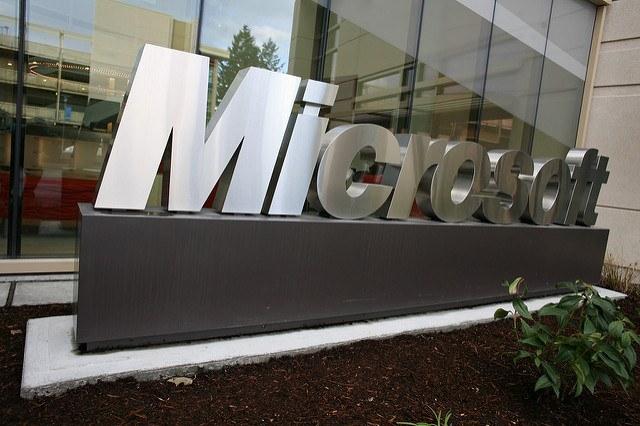
The practice has yet to gain widespread acceptance, but internal carbon pricing is starting to catch on in the global business community. One of the companies setting the standard is Microsoft, which back in 2012 imposed what can be best described as an internal carbon tax in order to nudge the company closer to carbon neutrality.
Now, some results are in: During the COP22 climate talks in Marrakesh, Morocco, the company released a white paper that makes a strong business case for an internal carbon fee.
Microsoft’s argument is that such a policy can help a company become more efficient and also inspire social and economic impacts far beyond its headquarters.
Microsoft’s sustainability strategy sounded cliché at first, with its three pillars of “be lean, be green, be accountable.” Four years later, however, the company is arguably practicing what it preached.
It set targets to become leaner by decreasing its energy consumption, which includes the use of technology to reduce unnecessary business travel. In turn, the company’s drive to be “green” includes ambitious commitments to the purchase of more renewable energy. With such efforts comes transparency and accountability, as the company established an internal price on carbon. It also tracks emissions with software and encourages employees to change their habits through several sustainability awareness programs.
The results are certainly impressive. Microsoft reduced its carbon emissions impact by 9 million tons of CO2 equivalent since 2014. The company has in turn invested in more than 14 million megawatt-hours of renewable power. Microsoft suggests that 7 million people across the world benefited from its investments in carbon offset projects.
It is that last point by which Microsoft can offer companies ideas on how they can “create impact.” All companies say they want to have a positive impact – the trick is actually executing such a plan. Microsoft opted to purchase carbon credits that balance out its emissions, whether they come from business travel or the consumption of energy in regions where clean-energy generation is not a possibility.
The benefits, Microsoft says, can be seen all over the map. Its carbon offsets funded clean cookstove programs in countries such as Guatemala, Ethiopia and Nepal. Environmental conservation projects launched in regions as remote as Australia’s Tasmania and coastal Chile. The company even purchased carbon offsets in Mongolia, which fund energy-efficiency and home-insulation projects. (Citigroup is involved in a similar program in Mongolia.) Microsoft says these programs reached students, women, farmers and wildlife around the world.
This is not just one-way philanthropy. Microsoft has the opportunity to strengthen business ties across the globe due to its offering of technology that helps these projects succeed. After all, technology donated now could lead to contracts in the future. The company says its smartphones and tablets help locals working on the Rimba Raya REDD+ Project in Indonesia document the local environment – one that has suffered since palm oil companies moved into the region and disrupted the ecosystem and local economy. Microsoft partnered with other REDD+ (the United Nations’ Reducing Emissions from Deforestation and forest Degradation) projects in Madagascar and Malawi.
It is here where some may quibble with Microsoft’s insistence that is has actually affected the lives of as many as 7 million people; the REDD+ program has its fair share of critics, who suggest that while the program is noble, it lacks the necessary enforcement and due diligence mechanisms that could otherwise make the program far more effective.
But when it comes to creating a company culture that understands and values sustainability, Microsoft sets the bar high. Climate grants available to business groups and subsidiaries give the freedom to explore projects as mundane as improving energy efficiency, to the funding of initiatives that to some may seem the more outlandish -- as in Project Natick, the testing of a subsea data center off the U.S. Pacific shore.
The world may agree that the climate cannot warm any more than 2 degrees Celsius this century if society is to avoid risks and increased disasters due to climate change. The solutions will be difficult to achieve. And they will require plenty of experimentation, with some ideas failing as others will scale.
On that point, Microsoft is way ahead of the curve and will long serve as a case study for why the business community needs to take climate change more seriously; and better yet, the company offers ideas instead of hand-wringing.
Image credit: Robert Scoble/Flickr

Leon Kaye has written for 3p since 2010 and become executive editor in 2018. His previous work includes writing for the Guardian as well as other online and print publications. In addition, he's worked in sales executive roles within technology and financial research companies, as well as for a public relations firm, for which he consulted with one of the globe’s leading sustainability initiatives. Currently living in Central California, he’s traveled to 70-plus countries and has lived and worked in South Korea, the United Arab Emirates and Uruguay.
Leon’s an alum of Fresno State, the University of Maryland, Baltimore County and the University of Southern California's Marshall Business School. He enjoys traveling abroad as well as exploring California’s Central Coast and the Sierra Nevadas.














